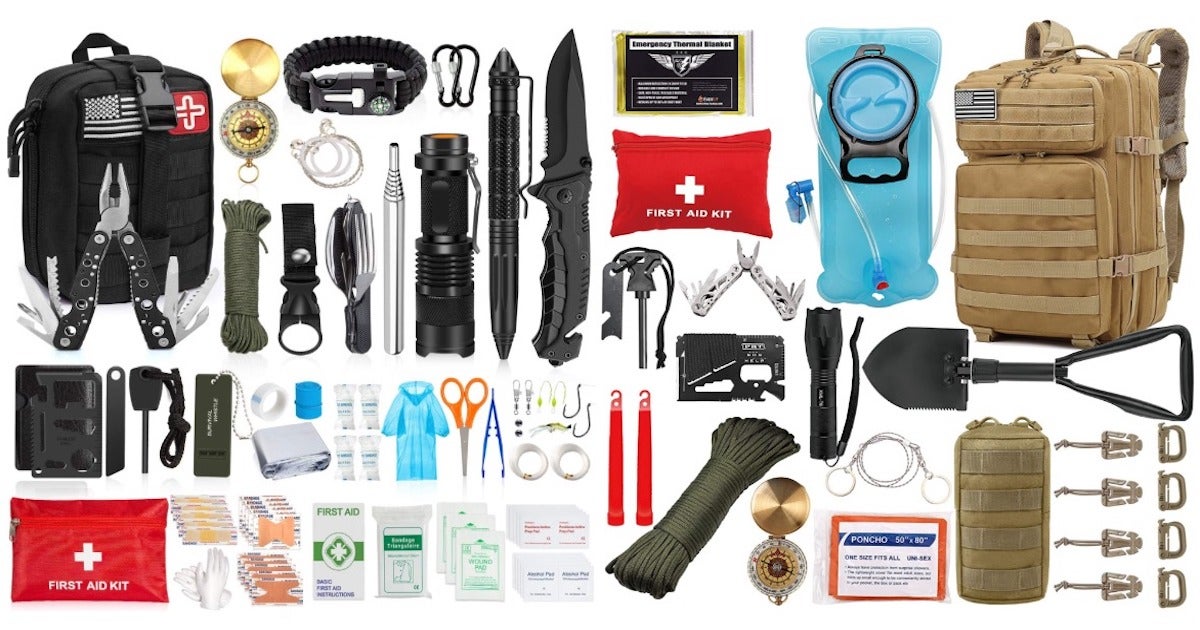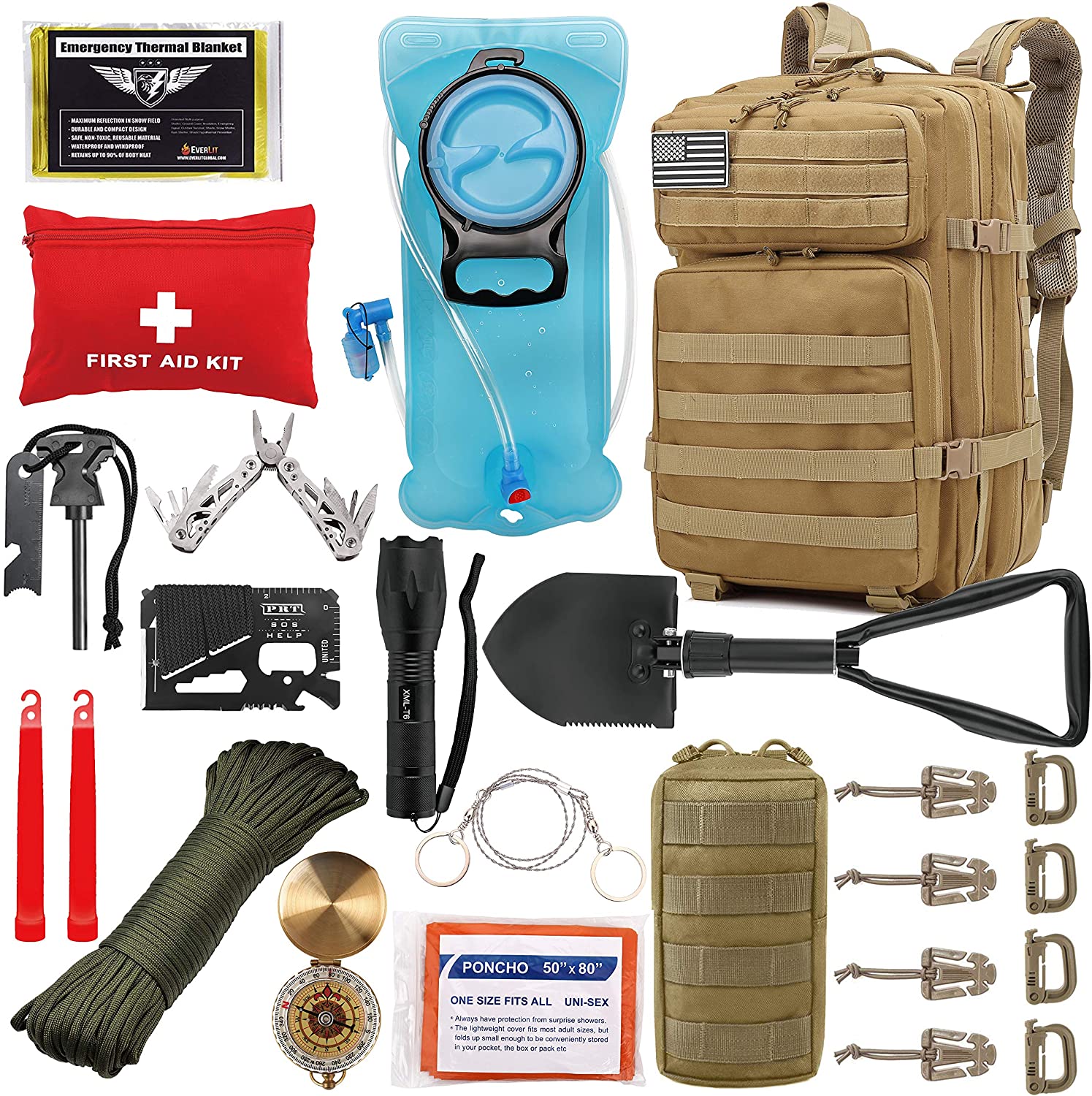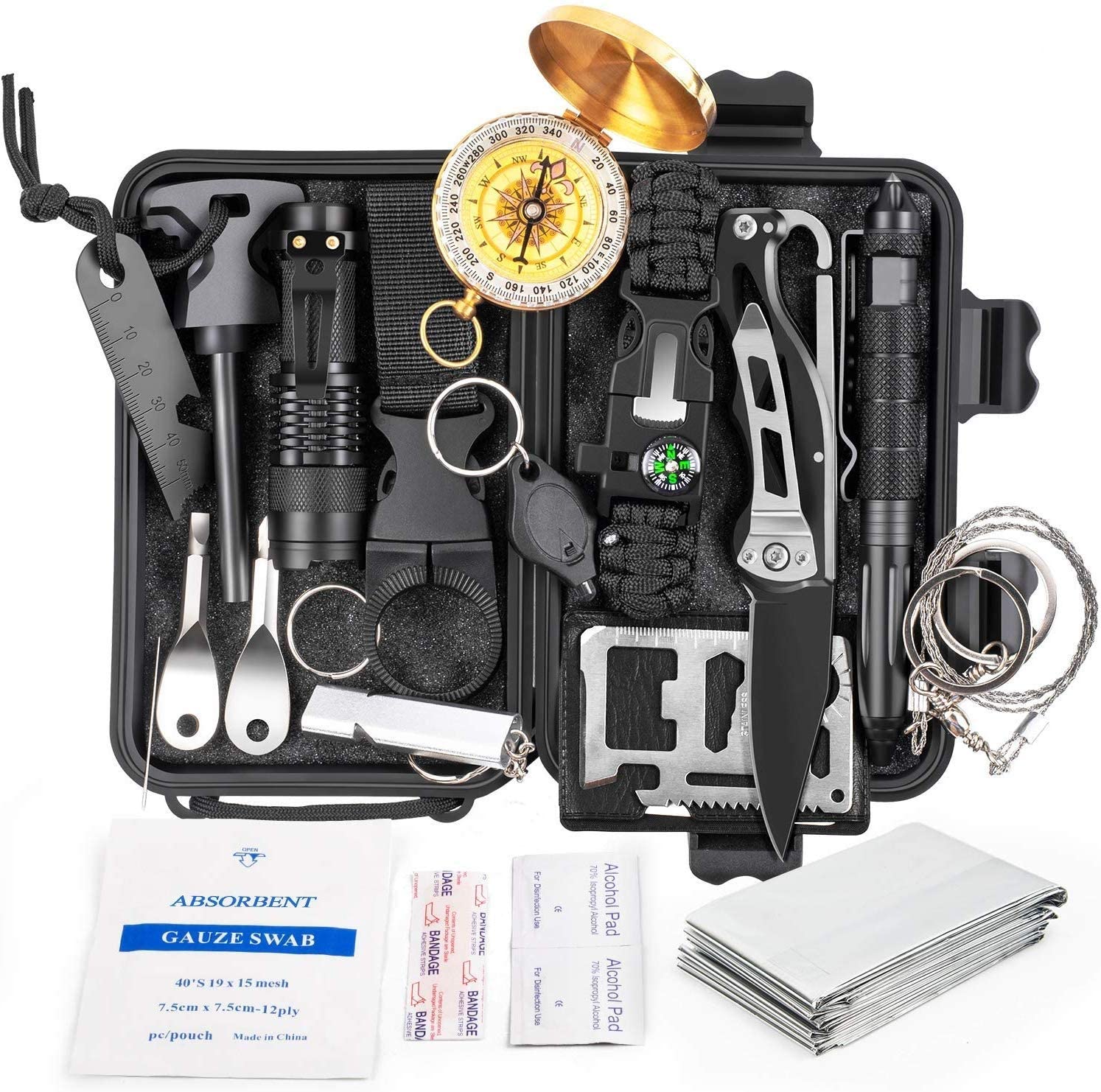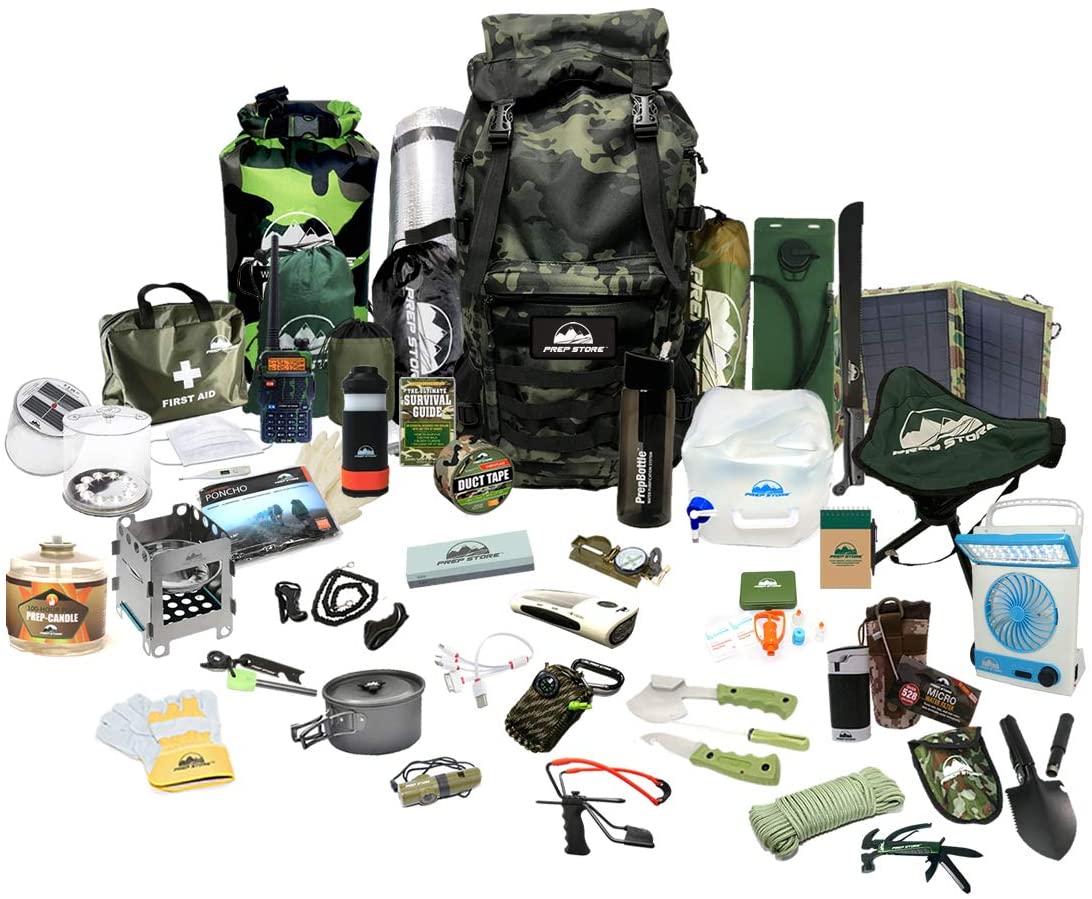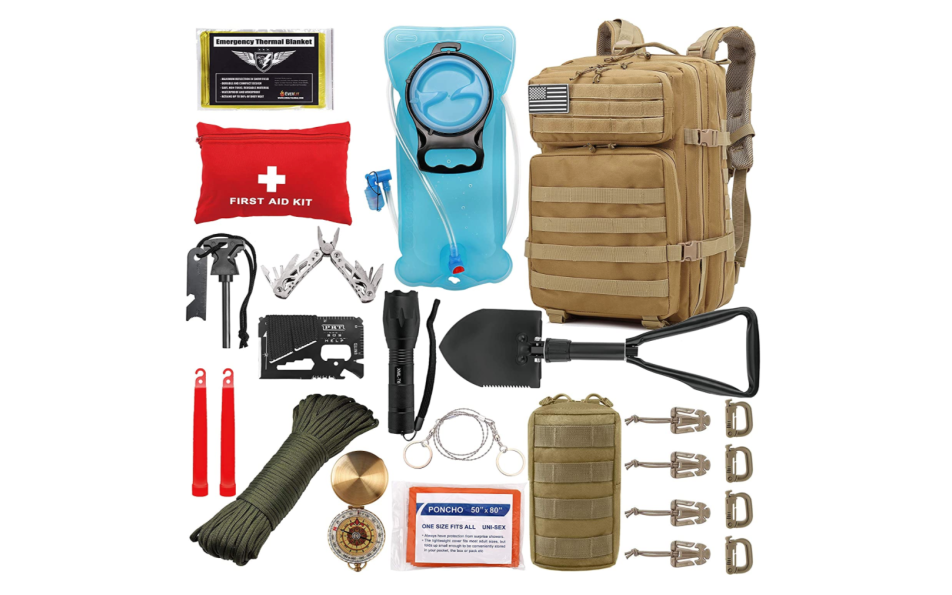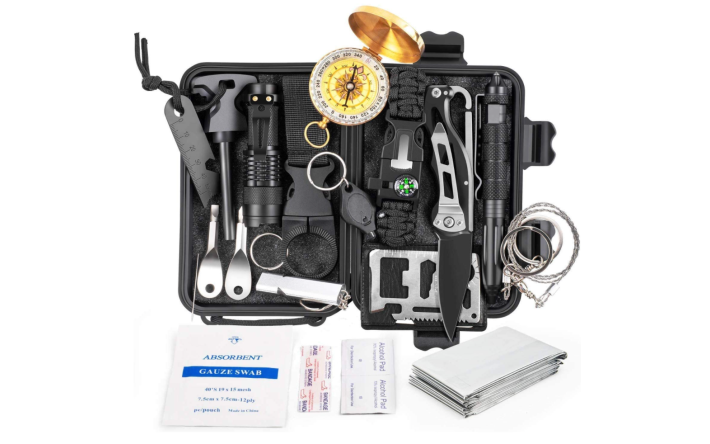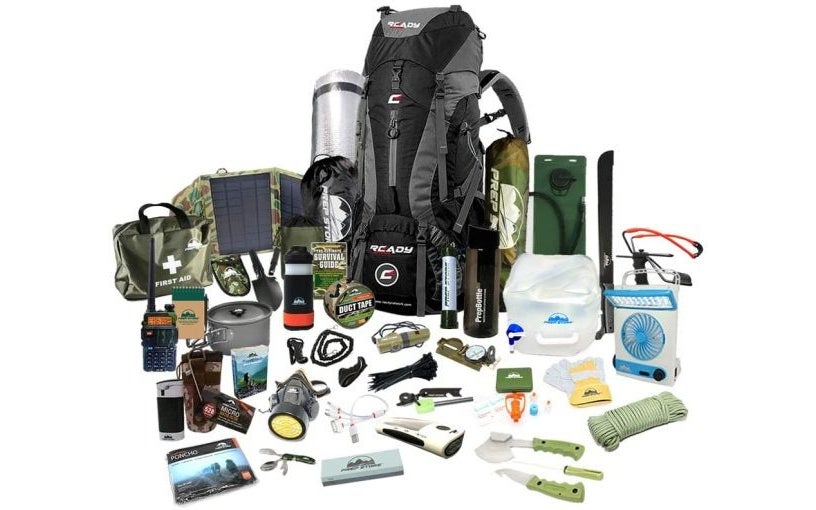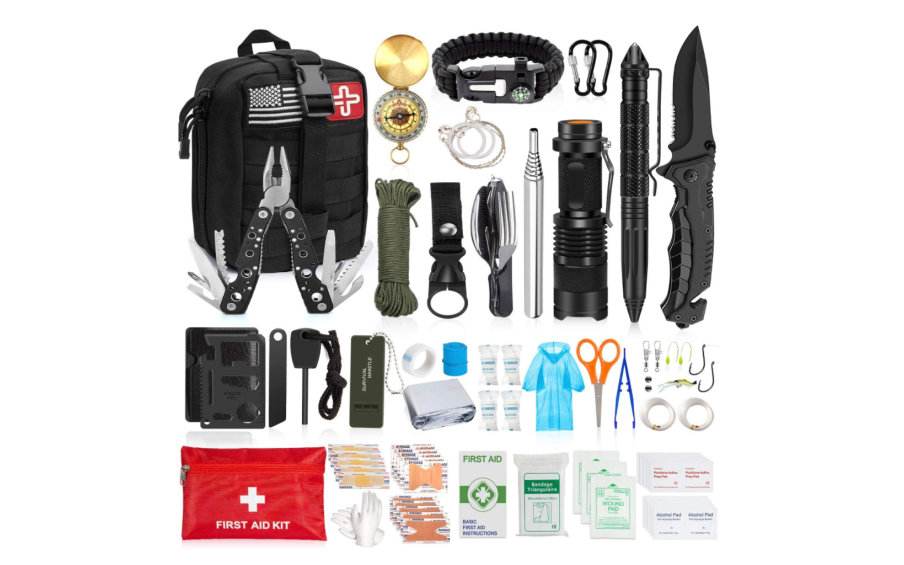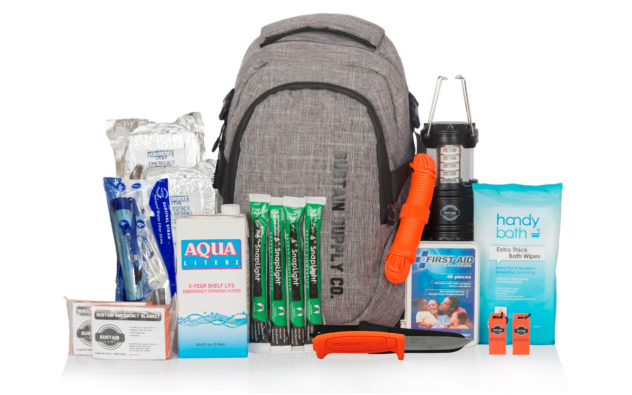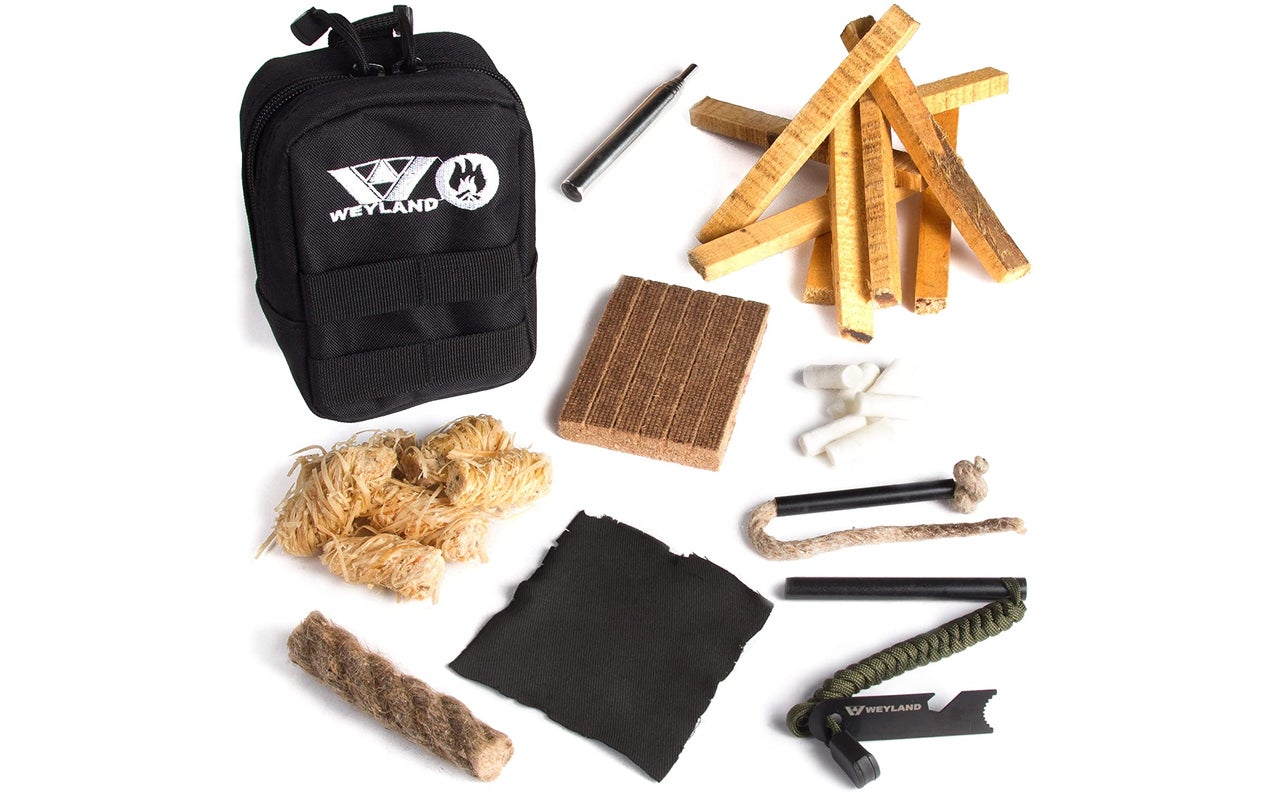We may earn revenue from the products available on this page and participate in affiliate programs.
If Bear Grylls taught us anything, it’s that a successful survival plan begins by immediately drinking as much of your own urine as possible. Once that’s done, you can move on to things like creating a shelter, obtaining food, and navigating to safety. Having a kit prepared in advance can make all the difference. The thing is, you never know what kind of challenges you’re going to face because real-life survival scenarios don’t start with an airdrop into a predetermined location. If you’re going to have a survival kit, you’d better make sure it’s set up to succeed in the environments you’re most likely to encounter.
You can still stack the deck in your favor by doing a practical analysis of the situations you’re likely to face. What’s most likely to present a challenge in your area? Start with the terrain and local climate––factors that are predictable. Pack a bug out bag with clothing that can keep you warm (or cool) and dry while you move to safety. How available is food? If you can’t count on scavenging or hunting, you’ll need to squirrel away enough calories to sustain you for several days at a minimum. Once that’s taken care of, you can start to geek out on the fun stuff: survival gear. As always, don’t forget to practice with whatever you buy. Sitting in a cold downpour on the edge of hypothermia is no way to experiment with a ferro rod for the first time.
Pre-assembled survival kits aren’t what I’d consider all-inclusive, but they’re a great starting point. Establish a foundation with a kit from the list below.
If you’re looking for more than the basics, the Everlit tactical survival kit is more like an assault pack built for the zombie apocalypse. The 43-liter backpack is chock full of tools to help you thrive on your own and has enough MOLLE webbing to add extra gear. Inside, you’ll get a 100-piece first aid kit, and survival essentials like a poncho, flashlight, fire starter, compass, and 100 feet of 550 cord. It also comes with a removable two-liter hydration bladder and an e-tool with a foldable pickaxe. The pack itself is built from thick, water-resistant fabric, and has padded shoulder straps and a ventilated back support to keep you comfortable for the long haul. When survival requires you to go foot-mobile and stay on the move, this is the kit to have.
If you’re looking for a small survival kit with a few roadside tools, the Kosin survival kit is the one to have. This kit sets itself apart with two screwdrivers and a steel multitool that combines a cutting edge, saw blade, can opener, bottle opener, ruler, and multiple wrench sizes. That’s in addition to tools you’ll need in remote environments like a wire saw, compass, thermal blanket, fire starter, and a pocket knife. Basic wound care items are also provided. The 18-piece kit comes in a hard plastic waterproof case. This is more durable, but less portable than other compact kits, so it’s best suited to vehicles. The price is also hard to pass up.
If you have the budget to go full prepper, the Prep Store Elite Emergency Pack will put you miles ahead of other survival kits. Water is taken care of, whether at a campsite or on the go, with a two-gallon container, two-liter bladder, and a filtration system capable of providing 1,500 gallons of clean, safe drinking water. Shelter comes in the form of a sleeping bag, sleeping pad, mosquito net, and one-person tent. You’ll get tools for hunting, fishing, and building. Rechargeable electronics like the flashlight are supplemented with a solar charger to keep them up and running without worrying about dead batteries. Stay safe with a robust first aid kit and call for help with a two-way radio. Sure, it’s expensive, but it’s comprehensive and ready to go out of the box.
You’ll be surprised by how much gear the Aokiwo emergency survival kit packs into a bag the size of an IFAK. Of course, it includes the basics like a small first aid kit, some 550 cord, a compass, and a flashlight. There are some more wilderness-oriented items you won’t find in most compact survival kits, though, like a wire saw and fishing kit. The tactically-minded will appreciate the defense pen and folding knife. The whole 126-piece kit comes in a MOLLE pouch available in black, brown, or camouflage. This is the perfect addition to your car, camper, hiking backpack, or anywhere else you might need short-term survival gear.
The Essential kit from Sustain Supply Co. is built for two people and flies under the radar better than tactical-style survival kits. You’ll get enough food and clean water for 72 hours, which is critical in natural disaster situations that can make clean drinking water impossible to find. In addition to the 12 packaged waters, you’ll get a filtration system to purify the water you find along the way. Snap lights and an LED lantern make it safer to navigate and hunker down at night. A knife, 550 cord, and two emergency blankets can be used to create a hasty shelter. As with all legitimate survival kits, a first aid kit is included, as well. This option is perfect for couples and excels in urban areas where sustenance takes priority over navigation.
Being able to create fire is a top concern in almost any survival situation, and this kit from Weyland has the basics to get you started. Eventually, you’ll need to boil water to drink or clean wounds. You’ll need to cook meat to keep your strength up. Cold will overpower whatever clothes you packed, and you’ll need a way to heat any shelter you create. Many kits include waterproof matches and lighters are certainly portable enough, but you can do better. This kit includes some of the most tried-and-true bushcraft tools for starting a fire, like rope for tinder, wood for kindling, cotton, and hemp. A ferro rod and steel striker create sparks even in the rain, and a collapsible bellows is included to improve airflow. At less than $30, this is a fantastic addition to any survival kit.
Types of survival kits
There is no perfect survival kit because priorities must be set and sacrifices must be made. If your kit has everything for every situation, that’s just called a prepper’s basement and it’s too big to carry. You need to decide for yourself what’s most important. Are you concerned about your car breaking down in a remote part of the country? Do you plan on keeping your survival kit on a boat? Are the most likely threats flooding and power outages caused by a hurricane? There are kits built for a range of situations and come in sizes as small as a MOLLE pouch and as large as a camping pack.
Key features of survival kits
- Size: Minimalist survival kits have little more than a fire starter and basic first aid supplies. Others provide food and shelter to get you back to safety. You’ll have to find your place on the preparedness spectrum.
- Sustainability: Survival kits are all designed to keep you alive, but they go about accomplishing that in different ways. Some include life’s necessities, others include tools to help you find them. Which one you choose depends on how long you think you’ll need to sustain yourself.
- Intended use: What are you going to use your survival kit for, anyway? Is this a roadside assistance policy in a pouch or a bugout bag? In either case, you’ll want to customize your kit to get the most out of it, but premade options are a great place to start.
- Features: Most survival kits have some kind of claim to fame, so pick the one you value the most. We found great options that prioritize food and water, wilderness survival, and self-defense.
Benefits of survival kits
The obvious benefit of survival kits is not dying, obviously. But they also save you time and money. Instead of scouring the internet for gear lists, getting sucked into a black hole of forum debates, and spending who knows how long trying to track down the items you want, you can basically pick your parameters and have the work done for you. Kits are also built to be portable, so they come prepackaged and well-organized.
Survival kit pricing
Survival kits are value-added products. You could buy everything in them separately, but that would cost you time and might actually be more expensive because, unlike the seller, you aren’t buying in bulk. Quality options can be had for as little as $30. These are great to keep in your car. High-end kits provide more resources and are better suited to storage in your closet until you need to make a quick escape. These will cost upwards of $500.
